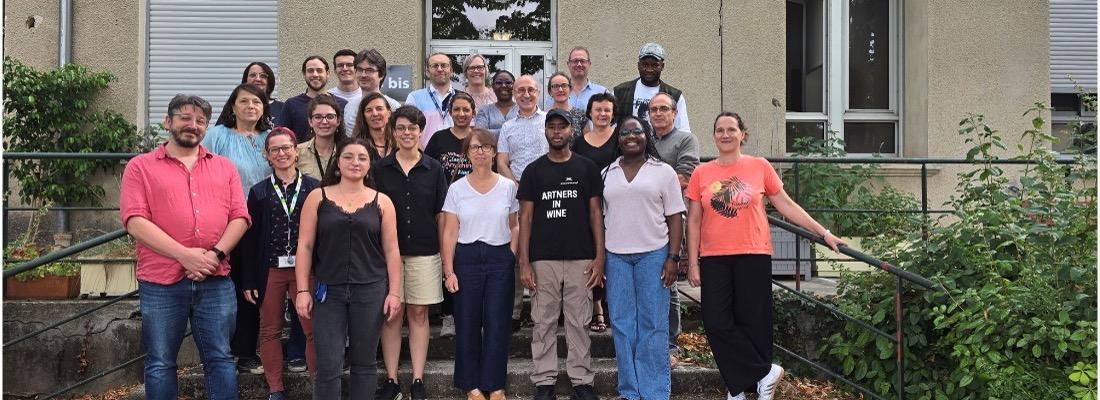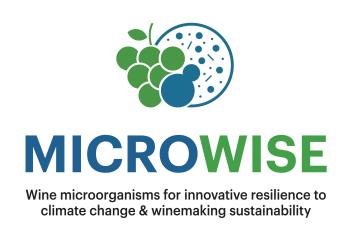Food, Global Health Reading time 4 min
MICROWISE: a new international associated laboratory between INRAE and Stellenbosch University
Research teams from INRAE Montpellier and Stellenbosch University join forces, in a new International Associated Laboratory (IAL) to address wine industry challenges.
Published on 04 November 2025

The MICROWISE International Associated Laboratory—"Microorganisms for Innovative Resilience to Climate Change and Winemaking Sustainability"—brings together two laboratories: the Unité mixte de recherche Sciences for Oenology (SPO) (INRAE, Université de Montpellier, Institut Agro Montpellier) in Montpellier and the South African Grape and Wine Research Institute (SAGWRI) at Stellenbosch University in South Africa. This collaboration builds on a long history of partnership, which has intensified since 2015, marked by co-publications, a joint PhD thesis, and extensive research exchanges for students and scientists.

Exploring wine yeasts biodiversity
Both laboratories have developed this initiative to strengthen their collaboration by leveraging their shared challenges and unique strengths, such as their locations in two different hemispheres and their scientific expertise. The wine industry is evolving and currently faces numerous challenges, including the need to develop production processes that are resilient to climate change (which alters the composition of raw materials), sustainable, and environmentally friendly (by reducing chemical inputs). Additionally, shifting consumer preferences—toward high-quality wines with distinct character and typicity—must be considered. MICROWISE aims to explore the biodiversity of wine yeasts and harness it to address these challenges, contributing to the sector’s commitment to agroecological transition.
MICROWISE’s three main approaches:
An ecological approach, aiming to compare the natural biodiversity of wine-related microbial communities between France and South Africa, understand microbe interactions, and identify environmental factors influencing community dynamics that promote species and strains with positive impacts, diversifying the sensory properties and style of wine.
A physiological approach, focusing on studying the physiological properties of non-Saccharomyces yeasts and utilizing this diversity to propose new mixed starter cultures adapted to climate-induced variations in grape juice composition, producing wines that meet consumer demand and access new markets.
A biochemical approach, seeking to characterize the diversity of mannoproteins among yeast species and strains, unravel the relationships between their chemical structure and function, and apply this knowledge to prevent tartrate, colloidal, and protein instability in wine, as well as modulate wine’s sensory perception.
High-level scientific cooperation
This IAL will serve as a framework for high-level scientific cooperation, around projects that utilize microbial diversity to create a more sustainable and climate-resilient wine industry. Beyond its industry impact, this initiative will benefit the scientific and technical staff of both groups by facilitating knowledge exchange and student training through mobility programs.
The MICROWISE kick-off meeting took place on September 8–9 2025 in Montpellier, attended by academics, postdoctoral researchers, and PhD students from both labs. During the opening session, Mr. David Martinon, French Ambassador to South Africa, emphasized the importance of this scientific collaboration in addressing global wine industry challenges and wished the upcoming work every success. Professor Kennedy Dzama, Vice-Dean of the Faculty of Agricultural Sciences at Stellenbosch University, and Dr. Christophe Chassard, Head of the MICA Division, also expressed their best wishes for the collaboration.
The event was highly productive and demonstrated the commitment of all stakeholders.
